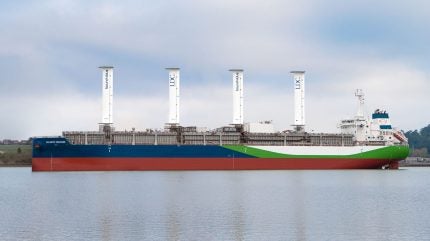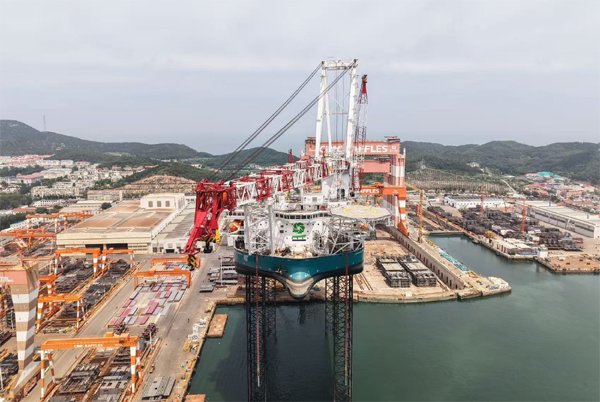

bound4blue has received validation from Lloyd’s Register for its wind propulsion system force matrix calculation methodology.
The methodology will enable shipowners to calculate Pwind for installations in line with regulatory frameworks, including FuelEU Maritime and the IMO’s EEDI (Energy Efficiency Design Index) and Energy Efficiency Existing Ship Index (EEXI).
Discover B2B Marketing That Performs
Combine business intelligence and editorial excellence to reach engaged professionals across 36 leading media platforms.
Pwind represents the propulsive power available from a wind-assisted propulsion system.
Under EEXI/EEDI, shipowners can deduct Pwind from the required engine power, and under FuelEU Maritime, it feeds into the Wind Reward Factor, which can affect greenhouse gas targets and associated compliance costs.
bound4blue said the validation allows shipowners to quantify the regulatory impact of its suction sail technology without full-scale trials.
The move provides a compliant route to quantify the propulsive power contribution of wind-assisted propulsion systems for inclusion in environmental compliance.
The methodology uses computational fluid dynamics (CFD) calculations corroborated by wind tunnel testing, according to the company.
The first application to use the validated approach is the installation of four bound4blue eSAILs on the juice carrier M.V. Atlantic Orchard, chartered by Louis Dreyfus Company (LDC) and owned by Wisby Tankers.
LR Advisory ship performance manager Santiago Suarez de la Fuente said: “As the maritime industry works towards ambitious decarbonisation targets, shipowners and technology developers need confidence that their investments align with both evolving regulatory expectations and their own objectives.”
LR’s assessment confirms the methodology’s alignment with IMO requirements.
The company stated that the verified process addresses both sail-to-sail and ship-to-sail aerodynamic interactions to produce an installation-specific force matrix, with LR acting as the independent verifier.
While force matrices must be generated for each vessel and configuration, bound4blue said the validated methodology can be applied across projects that use the same CFD-based approach.
This enables verified Pwind values for new eSAIL installations and supporting project timelines and compliance processes.
bound4blue chief technical officer and co-founder David Ferrer said: “The validation not only confirms the accuracy of our performance assessments, but also ensures they are immediately applicable for compliance with today’s most important environmental regulations.”
The company reported rising interest in wind propulsion following the introduction of FuelEU Maritime, which includes a Wind Reward Factor that can relax targets for relevant vessels.
Recent orders cited by the company include projects for Maersk Tankers, Marflet Marine, Klaveness Combination Carriers and Eastern Pacific Shipping, with the technology offered for both newbuildings and retrofits across multiple vessel types.
In August this year, LR launched LR Ports Advisory to help ports tackle complex challenges.
The initiative provides strategic advice on risk management, performance optimisation, investment planning, energy transition, and asset management amid pressures from geopolitics, sustainability, security, and technology.



